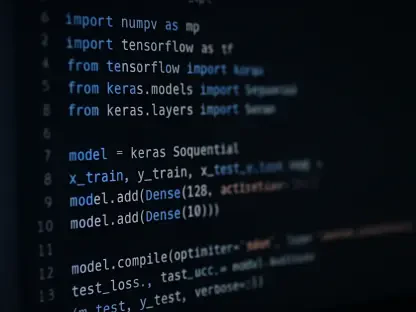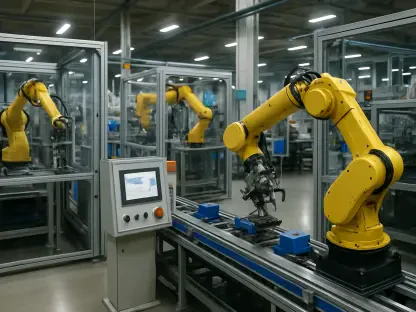In the ever-evolving world of software engineering, few voices cut through the noise quite like Anand Naidu, our resident development expert. With a mastery of both frontend and backend systems, Anand brings a wealth of knowledge on coding languages, system design, and the critical importance of engineering fundamentals. In this interview, we dive into the pitfalls of relying on hardware to mask poor design choices, the undeniable value of core concepts like data structures and algorithms, and the real-world impact of these decisions on performance, costs, and user experience. Join us as we explore how getting back to basics can transform systems and balance sheets alike.
What do you think is at the heart of the idea that throwing more hardware at a problem won’t fix underlying engineering flaws?
I believe it comes down to the fact that hardware is just a tool, not a solution. If the foundation of your system—your architecture, data structures, or algorithms—is inefficient, adding more servers or faster processors only delays the inevitable. It’s like putting a bigger engine in a poorly designed car; you might go faster for a while, but the structural issues will still cause breakdowns. The real fix lies in addressing the root cause, whether that’s optimizing code, rethinking data access patterns, or redesigning workflows to align with how computers actually operate.
Can you share a specific moment from your career where adding more hardware failed to solve a performance issue?
Absolutely. Early in my career, I worked on a project where we had a web application struggling with slow response times during peak traffic. The initial instinct was to scale up by adding more instances to our cloud setup. We did that, and while it helped for a short period, the bottlenecks persisted because the core issue was in our database queries. We had inefficient joins and no proper indexing, so the system was doing far more work than necessary. Once we optimized the queries and added the right indexes, we actually reduced the number of instances and still saw better performance. It was a lesson in looking deeper rather than just scaling out.
Why do you think there’s such a strong emphasis on returning to basics like data structures and algorithms when designing systems?
Fundamentals are the bedrock of efficient systems. Data structures and algorithms aren’t just academic exercises; they dictate how your system handles scale, latency, and resource usage. When you understand these basics, you can make informed choices—like picking a hash map for fast lookups or a tree for sorted data—that prevent bottlenecks before they start. Without that foundation, you’re often guessing or following trends, which leads to wasteful designs. I’ve seen teams adopt flashy new frameworks without understanding the underlying costs, and they pay for it in performance hits or bloated infrastructure bills.
How have you used these core concepts to enhance a system’s efficiency in your own work?
One example that comes to mind is a project where we were dealing with a high-volume data processing pipeline. Initially, the system used a simple array to store and search through incoming data, which was fine for small datasets but became painfully slow as volume grew. By switching to a balanced binary search tree, we drastically cut down search times from linear to logarithmic complexity. That single change reduced processing delays by over 60% and allowed us to handle much larger datasets without additional hardware. It was a direct result of applying those fundamental principles to a real-world problem.
How do engineering decisions influence service-level objectives in the projects you’ve worked on?
Engineering choices directly shape whether you meet or miss service-level objectives like uptime or response time. For instance, in a recent project, we had strict latency targets for an API serving thousands of requests per second. Our initial design didn’t account for tail latency—those rare but impactful delays at the high percentiles. By profiling the system and optimizing our caching strategy to prioritize hot data, we smoothed out those spikes and consistently hit our targets. Poor decisions, like ignoring data locality or over-relying on network calls, can easily break your promises to users, no matter how robust your monitoring is.
Have you noticed a direct link between system design and infrastructure costs in your experience?
Oh, definitely. I’ve seen cloud bills balloon because of design oversights. On one project, the team opted for a generic key-value store for a workload that had heavy range queries. The store wasn’t optimized for that pattern, so we ended up over-provisioning instances to compensate for slow reads, which drove costs through the roof. When we switched to a storage engine better suited for range scans, like a B+ tree-based system, we cut our resource usage in half. It’s a clear reminder that design choices aren’t just technical—they hit the bottom line hard.
Can you walk me through a time when selecting the right data structure turned a project around?
Sure. I once worked on a real-time analytics platform that needed to process and query millions of events per minute. We started with a straightforward hash map for storing event metadata, but as the data grew, memory usage became unsustainable, and lookups under heavy load started to stutter. After analyzing the access patterns, we moved to a trie structure for prefix-based queries, which was much more memory-efficient for our use case. That shift not only stabilized performance but also reduced our memory footprint by nearly 40%. It was a game-changer, and it all came down to picking the right tool for the job.
How do you approach balancing latency concerns in your system designs, especially at scale?
Latency is a silent killer at scale, so I always start by mapping out the critical paths where delays can compound. I lean on principles like minimizing network round-trips and maximizing cache hits. For example, I often design systems to keep hot data in memory or close to the processor by using structures that respect cache locality. I also profile relentlessly to catch tail latency issues early—those 99th percentile delays can ruin user experience even if average latency looks fine. It’s about designing with the worst-case scenario in mind, not just the happy path.
What strategies do you rely on to keep data access fast, particularly when dealing with memory or network limitations?
Speeding up data access is all about reducing friction. I prioritize locality—keeping related data close together in memory to avoid cache misses. For instance, using a structure of arrays over an array of structures can make a huge difference in CPU efficiency for certain workloads. When networks are involved, I batch requests to cut down on overhead and use compression to shrink payloads. I’ve also found that sometimes the simplest fix, like tweaking buffer sizes or pre-fetching data based on access patterns, can yield big wins without overcomplicating the system.
What’s your forecast for the role of engineering fundamentals in the future of system design, especially with emerging technologies like AI?
I think fundamentals will only grow in importance, even as technologies like AI reshape the landscape. AI systems, at their core, are just complex data pipelines, and they’re incredibly sensitive to inefficiencies in data structures or algorithms. Poor design choices in machine learning pipelines—like bad indexing for vector searches or inefficient data movement—can negate the benefits of powerful hardware like GPUs. My forecast is that as systems become more data-intensive, engineers who master the basics will be the ones building sustainable, cost-effective solutions. The tools may change, but the principles of efficiency and clarity will remain the foundation.









